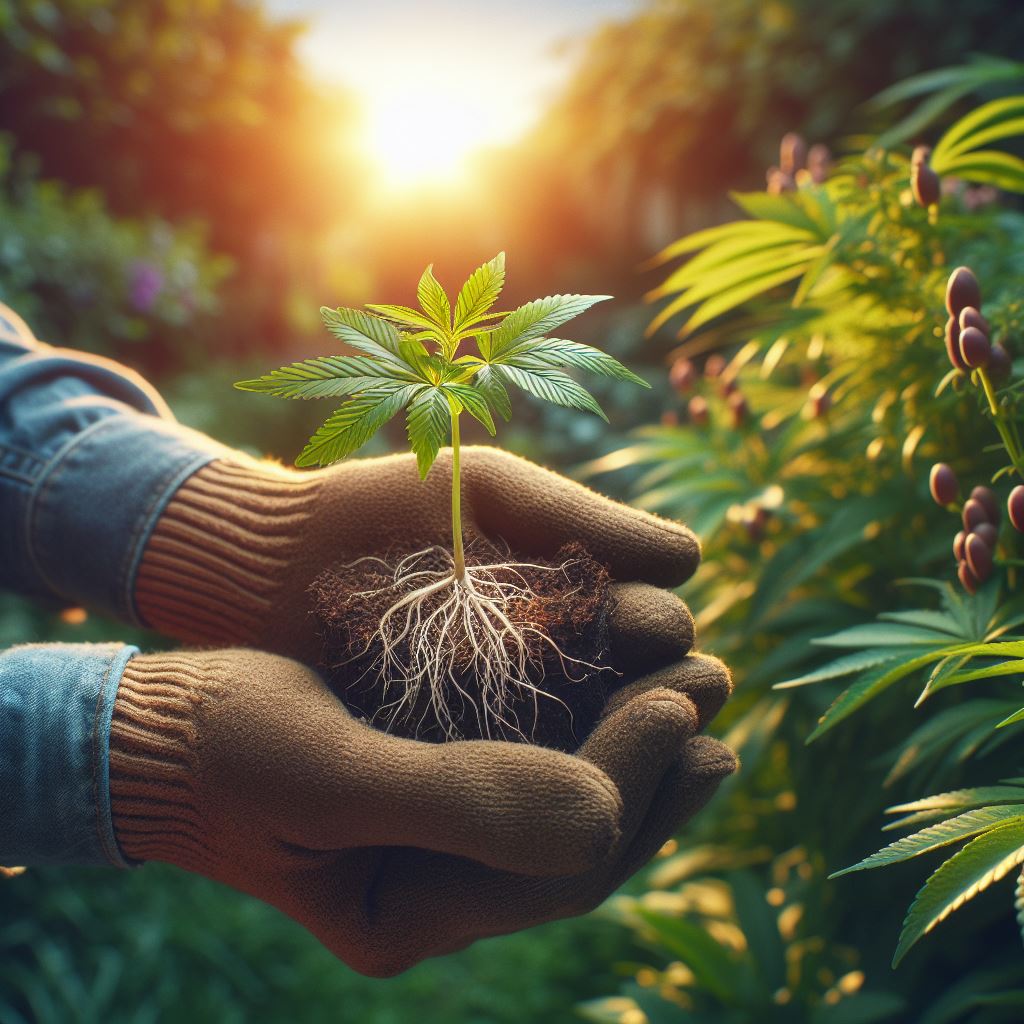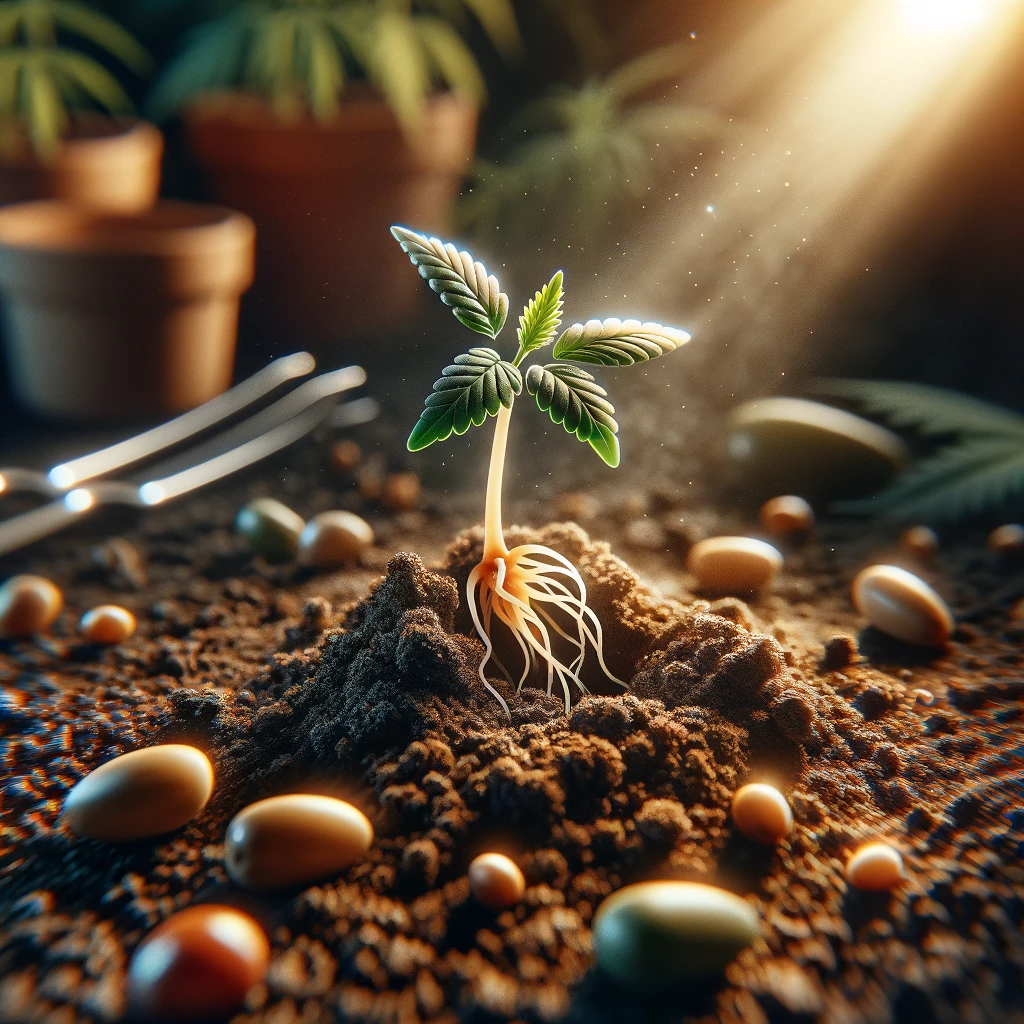Cannabis Cultivation 101: Tips for Growing Your Own Plants
Cultivating cannabis can be a rewarding endeavor for both novice and experienced growers alike. With the right knowledge and dedication, you can produce high-quality cannabis from the comfort of your own home. This comprehensive guide is designed to equip you with essential tips and strategies for successful cannabis cultivation, from selecting the right seeds to harvesting your plants.
Selecting the Right Cannabis Seeds
Understanding Seed Types
- Regular Seeds: These seeds produce both male and female plants. While they are less expensive, they require you to identify and separate male plants to avoid pollination.
- Feminized Seeds: Engineered to produce only female plants, which are the ones that produce the buds you’re after. They offer a straightforward cultivation process without the need to identify and remove male plants.
- Autoflowering Seeds: These seeds are perfect for beginners. Autoflowering cannabis plants switch from the vegetative stage to the flowering stage with age, rather than changes in light. They are typically ready for harvest in a shorter period.
Choosing Strains
Selecting the right strain is crucial for your cultivation success. Consider the following factors:
- Climate Compatibility: Ensure the strain you choose is suitable for your growing environment.
- Potency and Effects: Decide on the desired THC or CBD levels and the effects you’re looking for.
- Yield Potential: Some strains offer higher yields than others, important if maximizing output is your goal.

Creating the Ideal Growing Environment
Indoor vs. Outdoor Cultivation
- Indoor Cultivation: Offers control over environmental conditions, such as light, temperature, and humidity. It requires a higher initial investment but yields more predictable and consistent results.
- Outdoor Cultivation: Utilizes natural sunlight, reducing the need for artificial lighting. It’s less costly but subject to weather conditions and seasonal changes.
Optimizing Light Exposure
- Indoor Lighting: LED or HPS (High-Pressure Sodium) lights are popular choices. LEDs are more energy-efficient and run cooler, while HPS lights are known for their high output.
- Natural Sunlight: The most natural and cost-effective light source for outdoor grows. Ensure your plants receive at least 6 hours of direct sunlight daily.
Temperature and Humidity Control
- Ideal Temperature: Cannabis thrives in temperatures between 70-85°F (20-30°C) during the day and 58-70°F (15-21°C) at night.
- Humidity Levels: Seedlings flourish in higher humidity (60-70%), while flowering plants prefer lower humidity (40-50%) to reduce the risk of mold.
Nutrition and Watering Practices
Soil vs. Hydroponics
- Soil: Offers a more forgiving environment for beginners and enhances the natural flavor of cannabis. Organic super soil, enriched with nutrients, can significantly improve your harvest.
- Hydroponics: A soil-less cultivation method using nutrient-rich water. It allows for faster growth and larger yields but requires more expertise and attention.
Feeding Your Plants
- Nutrient Requirements: Cannabis requires a balance of nitrogen (N), phosphorus (P), and potassium (K), along with micronutrients like magnesium and calcium.
- pH Levels: Maintaining the correct pH (around 6.0-7.0 for soil and 5.5-6.5 for hydroponics) is crucial for nutrient absorption.
Watering Tips
- Overwatering vs. Underwatering: Overwatering is a common mistake that can lead to root rot. Allow the top inch of soil to dry out between waterings.
- Water Quality: Use filtered or distilled water to avoid harmful chemicals or minerals that can accumulate in the soil or medium.
Monitoring Plant Growth and Health
Vegetative to Flowering Transition
- Light Cycles: Indoor plants require a change in light cycle from 18 hours of light to 12 hours to induce flowering. Outdoor plants will naturally begin to flower as the days get shorter.
- Training Techniques: Techniques like Low Stress Training (LST) or Screen of Green (ScrOG) can increase light exposure and air circulation, leading to higher yields.
Pest and Disease Management
- Preventive Measures: Keep your grow area clean and monitor your plants regularly for signs of pests or disease.
- Organic Pesticides: Neem oil and diatomaceous earth are effective, non-toxic options for controlling pests.
Harvesting and Curing Your Cannabis
Identifying Harvest Time
- Trichome Color: Use a magnifying glass to examine the trichomes on your buds. When they shift from clear to milky white, with some turning amber, it’s time to harvest.
- Pistil Color: Another indicator is the color of the pistils; they should be mostly brown.
Drying and Curing Process
- Drying: Hang your harvested plants in a dark, ventilated room with a temperature around 60-70°F (15-21°C) and humidity around 50%.
- Curing: After drying, place the buds in airtight jars, opening them daily for the first week for a few minutes to exchange air and prevent mold.
Cultivating cannabis requires patience, care, and a bit of trial and error. By following these foundational tips, you’re well on your way to growing healthy, potent cannabis plants. Whether you’re a first-time grower or looking to refine your techniques, the journey of cannabis cultivation is both educational and immensely rewarding.
Cannabis cultivation is a journey that extends beyond the initial stages of planting and caring for your seeds. As you transition from the basic setup and early growth phases, attention to detail and a deeper understanding of the plant’s needs become increasingly critical. The journey from a seedling to a fully mature plant is filled with nuances that, when understood and respected, can significantly enhance the quality and quantity of your yield.
Creating a sustainable environment for your cannabis plants involves more than just providing light and water; it’s about creating a micro-ecosystem that supports all phases of growth. One aspect often overlooked by beginners is the importance of air quality and circulation. Adequate ventilation is crucial in preventing the buildup of humidity around your plants, which can lead to mold and mildew. Implementing a simple fan system to move air around your grow room can make a significant difference in plant health and disease prevention.

As your plants grow, they will also require different levels of nutrients during the vegetative and flowering stages. While nitrogen is more critical during the vegetative growth for leaf and stem development, phosphorus and potassium become vital during the flowering stage to promote bud formation. Understanding the subtle shift in nutritional needs is paramount to achieving a bountiful harvest. However, it’s essential to avoid the temptation to over-fertilize, as this can lead to nutrient burn, characterized by yellowing leaves and stunted growth.
The timing of the transition from the vegetative to the flowering stage is a decision that can dramatically impact your plant’s yield. While some growers prefer to switch when the plant reaches a certain size, others may wait for the plant to mature further, allowing for more significant growth. This decision should be tailored to your growing space and the specific needs of your strain.
Pruning and training your plants are techniques that can also influence your harvest. Pruning allows you to remove unnecessary foliage that may be drawing energy away from the bud sites, while training techniques like topping and bending can help create a more even canopy. This ensures that all parts of the plant receive equal light, leading to more uniform growth and potentially larger yields.
The harvest itself is a delicate process that demands patience and precision. Timing is everything. Harvest too early, and you may end up with less potent buds; too late, and you might find the effects more sedative than desired. After cutting down your plants, the drying and curing process begins. Drying should be done slowly to preserve the terpenes and cannabinoids that contribute to the aroma, flavor, and effects of the cannabis. Curing, which involves storing the dried buds in airtight containers and opening them periodically to allow for air exchange, enhances these qualities further.

Cannabis cultivation is as much an art as it is a science. Each plant can teach you something new, and every grow room or garden has its unique challenges and rewards. By paying close attention to the needs of your plants and responding with care, you can cultivate not just cannabis, but a rewarding and enriching experience that grows alongside your plants. The key to success lies in observation, adaptation, and a willingness to learn from each cycle of growth. With these principles in mind, you’re well-equipped to navigate the complexities of cannabis cultivation and enjoy the fruits of your labor in the form of high-quality, homegrown cannabis.
In the final chapter of our comprehensive guide to cannabis cultivation, we transcend the practicalities of nurturing your plants to bloom and delve into the nuanced art of refinement and mastery. This concluding segment aims not only to encapsulate the journey from seed to harvest but also to inspire a deeper connection with the process, encouraging cultivators to see beyond the cycle of growth to the broader implications of their endeavor.
Embracing Sustainability in Cultivation
As you become more adept at growing cannabis, consider the impact of your cultivation practices on the environment. Sustainable growing techniques, such as using organic nutrients, recycling water, and harnessing natural light, not only benefit the planet but can also lead to healthier plants and purer products. Experiment with companion planting to naturally repel pests and improve soil health, minimizing the need for chemical pesticides and fertilizers.
Advanced Techniques for the Connoisseur
For those looking to elevate their cultivation skills, exploring advanced techniques can unlock new levels of potency and aroma in your cannabis. Consider the art of pheno-hunting, where growers select plants based on desirable traits, such as flavor profile, potency, or yield, to create a custom-tailored cultivation experience. Another sophisticated technique involves manipulating the plant’s environment to stress them slightly, which can lead to increased resin production and, consequently, more potent buds.
Las Vegas Cannabis Tourism in 2024: Best Spots and Experiences
Cannabis Cultivation 101: Tips for Growing Your Own Plants
Step-by-Step for Beginners Germinate Cannabis Seeds
Emerging Trends in Cannabis Products: What’s Coming in 2024
The Personal Journey of Cultivation
Growing cannabis is more than a hobby or a means to an end—it’s a personal journey that can offer profound insights and rewards. Reflect on what each harvest teaches you about patience, care, and the cycles of nature. Cultivating cannabis becomes a mirror for self-growth, with each challenge and success reflecting back lessons of resilience and attentiveness.
Crafting Your Signature Strain
As you refine your skills and understanding of plant genetics, consider breeding your cannabis strains. This creative pursuit allows you to mix and match desirable traits from different strains, potentially creating a unique variety that expresses your personal cultivation philosophy and taste. Documenting your experiments and outcomes can contribute to the broader community of growers, fostering a culture of innovation and shared knowledge.
Sharing Your Harvest: Community and Culture
The final stage of cultivation transcends the physical harvest, extending into the sharing of your bounty with friends and fellow enthusiasts. Cannabis has a long history of communal use, and by sharing your harvest, you participate in a tradition that dates back centuries. Hosting tastings or swap meets can not only deepen your understanding and appreciation of cannabis but also strengthen the bonds within your community, creating a shared experience that enriches everyone involved.
The Final Post
As we conclude this guide, remember that the journey of cannabis cultivation is cyclical, with each end heralding a new beginning. The finality of harvest is merely a pause, a moment to reflect, learn, and plan for the next cycle of growth. Your journey as a cultivator is boundless, limited only by your curiosity and desire to engage with the plant and the process.
Cannabis cultivation is an art form that intertwines science, intuition, and creativity. It’s a practice that teaches patience, offers tangible rewards, and connects you to a community of like-minded individuals. As you continue to explore and refine your approach, let the principles of care, sustainability, and innovation guide you. The path of cultivation is rich with discovery, and each step offers the opportunity to deepen your connection to the earth, the plant, and yourself.
In this expansive world of cannabis cultivation, every plant, every harvest, and every shared experience contributes to a larger tapestry of knowledge, culture, and connection. May your journey be fruitful, your learning continuous, and your connections profound. Here’s to the growers, the innovators, and the community builders—may your gardens flourish, and your spirits soar.




